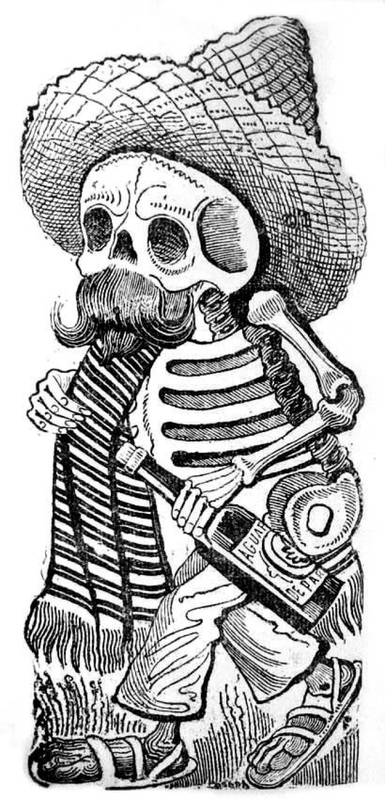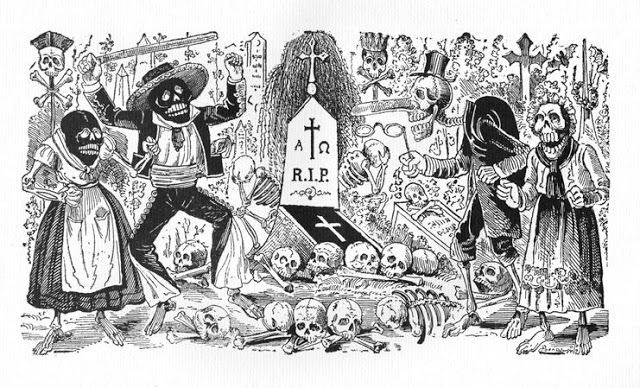Calaveras literarias or calaveritas literarias which literally means literary "skulls" or little skulls in Spanish, are short poems or poetic, satiric and lyric epitaphs composed for the Day of the Dead in Mexico. These poems usually mock people in a picaresque way that suggests they’re dead, even though if they are alive. The calavera catrina or the dapper skeleton often plays a visit to the character to which the poem is dedicated, usually a politician, rich people, celebrities and people in the public eye. You can find some examples here.
The subversive tradition of these types of satirical poems dates back over 500 years and it is linked to the European Dance of the Death and hence are often also a reminder of our proximity mortal condition. However, before the arrival of the Spanish empire, the deep connection with the death of prehispanic cultures contributed greatly to the playful and open spirit of these poems. During the last decades of the colonial period the criollos wrote calaveras, called panteones at the time, to express their inconformity with the Spanish authority, which ended oppressing this form of protest. Yet, it is through the satirical creativity of the illustrator José Guadalupe Posada that these art of verse established itself in the Mexican tradition. During his lifetime José Guadalupe Posada published a number of illustrations in newspapers, pamphlets, books, etc. to denounce the upper classes during the reign of Porfirio Díaz. A calaverita literaria often accompanied Posada’s illustrations, thereafter immortalizing the aesthetics of the Mexican skull that can be seen everywhere. Even though the illustrations address the powerful, these are usually intended to be taken in a respectful spirit of fun. Nowadays ordinary people also write calaveras for each other in schools, universities and working places. Some of them also appear in the classified section of the papers around the Day of the Dead. The calaveritas point out the shortcomings of people, but are usually intended to be taken in a respectful spirit of fun. The structure of the calaveritas literarias typically consists of stanzas of four lines in which the second line rhymes with the last, or stanzas of five in which the third line rhymes with the last. The length of the poem varies, but this is often short. However, nowadays people do not follow a particular structure, sometimes these being written in a form of ‘blank verse’ or even free verses. The calaveritas always put an emphasis on musicality. Example of an illustration of Guadalupe Posada:
0 Comments
Leave a Reply. |
AuthorUnless stated otherwise, our posts are written by our committee members. If you want to write a post for our blog, contact us! Archives
September 2017
Categories
All
 All the work in this blog is licensed under a Creative Commons Attribution-NonCommercial-NoDerivatives 4.0 International License. |



 RSS Feed
RSS Feed
